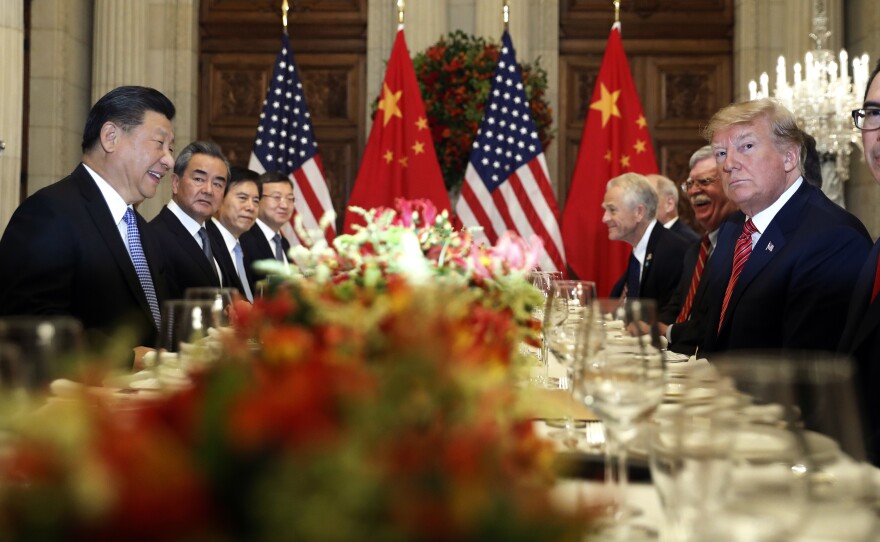KPBS Anchor Maya Trabulsi and BottomLine Marketing co-founder and SDSU marketing lecturer Miro Copic discuss some of the week’s top business stories.
Q: Last week we talked about the USMCA trade deal. This week brought the start of a truce with China a year and a half after President Trump started a trade war with the country. How is this going to help our economy?
RELATED: US-China Trade Tensions Mean Tough Times For Local Lobster Industry
A: The deal is interesting because it's a multi-phase deal, very limited in terms of the goals of the administration of really changing the trade relationship with China. Absolutely did not meet any of those goals, but it did have a few minor victories. So from the U.S. side, instead of having tariffs on $560 billion of trade, we're only going to have tariffs on $360 billion. We're reducing some tariffs. We're keeping some tariffs. And then some tariffs that were going to go into effect in December are not going to go into effect at all. So that means consumers, who are about paying about $1,000 a year in incremental costs, are going to pay a little bit less in 2020. The last thing that we have to keep in mind about these relationships is in the past, China has not necessarily followed through on a number of their commitments. So it's going to be a wait-and-see issue. Negotiators are gonna be back at the table in a number of months for round two. The likelihood that we'll see any new deal won't be until after the election.
Q: Let's follow up on the holiday shopping season. One huge retailer had some pretty disappointing sales. Tell us about that.
RELATED: Toys R Us Is Coming Back But With A Different Approach
A: Yeah. Target, which had a really good year, had about a just a 1.4% increase in holiday sales. In a tough retail environment that doesn't seem like it's that bad. But they had grown over almost 6% the previous year. And in context of what happened this season, the National Retail Federation announced yesterday that retail sales during the holiday shopping period were up 4.1%, which is on the high end of their forecast. The government announced that consumer spending overall for the economy was up three-tenths of a percent. So consumers are spending. There's money in the market. They just weren't spending it at Target.
One of the things that Target did is they went all-in on toys. They expanded their toy selection. They actually were the fulfillment house for the new Toys R US website. And that really was disappointing. Their outlook is a little bit dim. But they're still looking for a strong 2020. They did make some staffing changes. They fired a couple of folks and they brought in two new merchandisers because they want to make sure that people have a better experience in stores. So we'll kind of wait and see, because last year, 9,300 stores closed. We're still going to see a lot of changes in the retail environment. And I think Target and Walmart want to stay ahead of the game.
Q: Some interesting news with a shift in demographics in the workforce. Women are now the majority. Tell us about this new trend.
RELATED: Women Now Outnumber Men On U.S. Payrolls
A: Yes. In December, women became over 50% of the overall workforce in the United States. It's been kind of touch and go since the great recession in 2008. They called it the mancession because most of the manufacturing jobs that went away brought the male participation rate in the workforce down. The reason why the trend seems to be more permanent is because of where the jobs are being created. The jobs are being created in sectors where women dominate, for example, health and education. Seventy-seven percent of all jobs in health and education are filled by women. Employers, because of a low unemployment rate, have to attract women with benefits that are relevant to them. So, for example, daycare, family leave, flexible work hours, even though that will benefit men, is a way that companies are going to attract and retain women. The one negative on this whole thing is that because women earn less per hour than men, and in some of those industries, like health and education or hospitality, the wages are a little bit lower, that's kind of the reason why we don't see the real wages growing as fast as they should.






